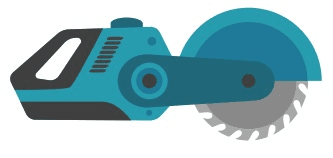The Comprehensive Guide to Power Tools: Understanding Their Types, Uses, and Maintenance
Power tools are indispensable in the modern-day workshop, enabling tasks that would otherwise be tiresome and time-consuming when carried out with hand tools. Varying from fundamental drills to complicated woodworking machines, power tools use efficiency and accuracy that can considerably change the way experts and enthusiasts approach their tasks. This short article explores the numerous kinds of power tools, their applications, upkeep ideas, and regularly asked questions.
Kinds Of Power Tools
Power tools are normally categorized into two main groups: cordless and corded. Each type has its benefits and perfect usages.
1. Cordless Power Tools
Cordless tools operate on rechargeable batteries, supplying higher mobility and ease of usage. Some common types include:
- Cordless Drill/Driver: Essential for drilling holes and driving screws, a cordless drill is an essential in any toolbox.
- Cordless Circular Saw: Ideal for cutting lumber and other materials, especially when mobility is required.
- Cordless Jigsaw: Useful for making intricate cuts and curves in various materials.
- Cordless Impact Driver: Perfect for driving long screws and fasteners into tough products quickly.
2. Corded Power Tools
While corded tools might be less portable, they typically offer more power and are typically utilized for heavier-duty jobs. Secret examples include:
- Table Saw: A fixed tool that offers accuracy cutting for woodworking projects.
- Miter Saw: Used for making accurate crosscuts and miters in a workpiece.
- Angle Grinder: Useful for cutting or grinding metal and concrete.
- Drill Press: A stationary drill that permits achieving greater accuracy in drilling holes.
Contrast Table of Cordless and Corded Power Tools
| Feature | Cordless Power Tools | Corded Power Tools |
|---|---|---|
| Movement | High | Restricted by power cable |
| Power | Less powerful | More effective |
| Weight | Lighter due to lack of cord | Heavier due to motor and cord |
| Battery Life | Limited by battery life | Constant power supply |
| Cost | Generally more costly | Generally more economical |
Applications of Power Tools
Power tools are utilized throughout different markets and activities. Understanding the ideal tool for the task can boost efficiency and results. Some typical applications consist of:
- Construction Projects: Drills, saws, and nailers dominate task websites for framing and roofing.
- Woodworking: Routers, sanders, and jointers help in creating detailed and polished wooden pieces.
- Automotive Repair: Impact wrenches and air compressors are essential for dealing with cars.
- Home Improvement: DIY lovers use numerous tools for remodellings, repair work, and landscaping jobs.
Popular Power Tools and Their Uses
Here are some regularly utilized power tools together with their primary applications:
Power Drill:
- Used for drilling holes and attaching screws.
- Comes in various sizes for different applications.
Reciprocating Saw:
- Ideal for demolition work and cutting through products like wood, metal, and drywall.
Sander:
- Used for smoothing surface areas, readily available in numerous types such as orbital and belt sanders.
Router:
- Employed in woodworking for hollowing out a location in a piece of wood.
Nail Gun:
- A quick and efficient tool for driving nails into wood and other materials.
Upkeep Tips for Power Tools
Keeping power tools in optimum condition is vital for safety and performance. Here are some upkeep ideas:
- Regular Cleaning: Dust and debris can collect in power tools. Routine cleaning assists keep efficiency and extends tool life.
- Examine Connections and Cords: Regularly look for fraying or damage to cords and connections. Change any broken parts immediately to prevent accidents.
- Sharpen Blades and Bits: Dull blades can reduce efficiency and accuracy. Routine sharpening makes sure clean cuts and faster operation.
- Lubrication: Certain tools require routine lubrication. Speak with the user manual for specific suggestions.
- Storage: Store tools in a dry environment and in their cases if offered. This secures them from wetness and unintentional damage.
Often Asked Questions (FAQs)
1. What safety equipment should be worn when using power tools?
- It is vital to use appropriate safety gear such as security glasses, hearing protection, gloves, and a dust mask depending on the tool in use.
2. How do I select the ideal power tool for a project?
- Think about the specific tasks you require to achieve, the product you'll be dealing with, and the tool's power capacity. Looking into tools fit for those tasks will assist in making the ideal option.
3. Are cordless tools as excellent as corded tools?
- Cordless tools provide convenience and mobility, while corded tools provide more power for heavier jobs. Pick based on your particular requirements.
4. How typically should power tools be preserved?
- Regular maintenance must be carried out regularly, preferably after every use. Comprehensive inspections and servicing ought to be done a minimum of when a year.
5. What is the lifespan of a common power tool?
- The life-span of power tools differs commonly depending upon usage and quality but usually varies from 5 to 15 years.
Power tools are valuable assets for both experts and DIY enthusiasts, offering effectiveness and accuracy unlike any hand tool. Comprehending Power Tool Shop , applications, and maintenance treatments is essential for optimizing their possible and ensuring security. With appropriate care and knowledge, these tools can serve users effectively for several years, eventually enhancing productivity and task outcomes. By purchasing quality tools and adhering to maintenance rituals, one can make the most out of every project, regardless of size or complexity.

